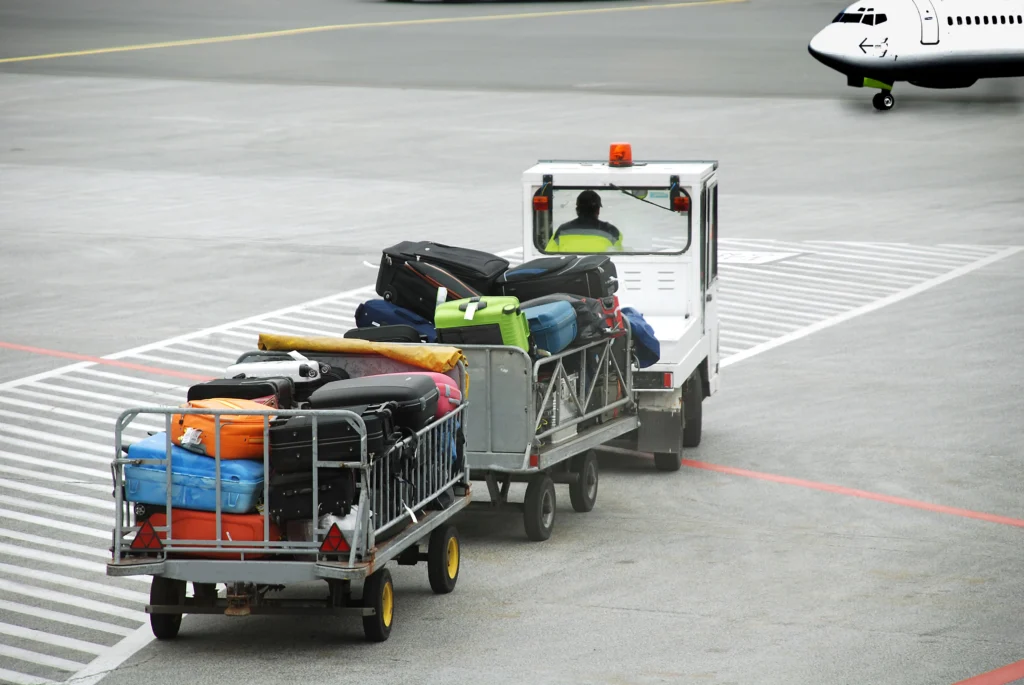Whether you’re a road warrior, business traveler, or an occasional holiday tourist, you are probably flying this summer with several devices powered by rechargeable, lithium-ion batteries — from the smartphone in your pocket to the noise-canceling headphones blocking the sound of a crying baby.
You likely appreciate that these devices help get you through a cross-country flight, but you might not be aware that their batteries pose a serious fire risk if damaged.
If you don’t know, you’re not alone: A new report by UL Standards & Engagement on lithium-ion battery incidents in aviation shows that 60% of Americans don’t realize that these batteries power many of the devices they use every day, and 50% admit they know nothing at all about them and the risks they pose.
So, if you’re unaware of the batteries powering your devices, how can you ensure you’re traveling safely? Here are some of the top things travelers are doing while unaware they may be putting themselves and others at risk.
1. Rechargeable batteries cannot be in checked luggage
Lithium-ion batteries are not supposed to be put in checked luggage because flight crews cannot easily access the cargo hold to extinguish a fire. Nonetheless, 38% of passengers admit to putting devices powered by lithium-ion batteries into checked baggage. In the rush to get everyone’s luggage on board, 30% of passengers asked to gate-check carry-ons don’t remember being asked by the airline if lithium-ion batteries were inside.
2. Thermal runaway could mean a significant delay—or landing somewhere you didn’t plan to
Many people blame weather, staffing, and more for their travel delays. However, thermal runaway — when a battery goes into an uncontrollable self-heating state that can lead to fire or even explosion — could be the culprit. Nearly 1 in 5 (18%) thermal runaway incidents result in significant passenger disruption, forcing a diverted landing, return to gate, or emergency evacuation or unplanned deplaning.
3. The most frequently used device isn’t always the culprit
The average U.S. traveler brings four devices — most commonly smartphones (81%), laptops (40%), wireless headphones (38%), and tablets (35%). Given the number of them on board, one may assume that smartphones are the leading cause of thermal runaway incidents. However, vapes, carried by only 10% of passengers, are actually the leading cause, responsible for 28% of the reported total. On top of that, over half (52%) of e-cigarettes and vape owners are unaware that their device is powered by a rechargeable battery. So-called ‘disposable’ vapes and e-cigarettes are particularly vulnerable to thermal runaway.
4. “Out of sight, out of mind” doesn’t apply
The majority (70%) of reported passenger incidents in 2024 were addressed by cabin crew when batteries showed warning signs such as overheating and smoking prior to entering full thermal runaway. Ensuring devices are in reach can support quickly and safely resolving the issues. But out of reach devices that are stored in checked luggage or even overhead bins are at risk of going undetected until the thermal runaway leads to smoke, fire, or explosion.
What can you do to keep yourself and fellow passengers safe?
- Know which devices are powered by lithium-ion batteries — this includes most
rechargeable devices, such as smartphones, tablets, and laptop computers, but
could also include electric toothbrushes, e-cigarettes, breast pumps, and
children’s toys — and keep those items at arm’s reach when flying. - Choose devices that conform to safety standards that are tested to protect
against thermal runaway risks (such as UL 1642 for Lithium Batteries, UL 2054
for Household and Commercial Batteries, UL 2056 for Power Banks, and UL
8139 for E-cigarettes and Vaping Devices). - Get help from cabin crew if your device is overheating. Your flight attendants are
trained to handle thermal runaway incidents and should be immediately notified if
you notice your device overheating, swelling, or worse.
Read More
The report, Lithium-Ion Battery Incidents in Aviation: 2024 Data Review, highlights the urgent need not only for better passenger education and cabin crew training on how to respond to incidents, but also for tighter safety standards in the manufacturing of lithium-ion batteries, wider availability of battery fire containment devices on planes, and
better fire protection systems in air cargo containers.
While these incidents are very unlikely, they are also largely preventable. Understanding the potential risks of rechargeable batteries and taking precautions can save lives — including your own.

Ready to Learn More?
Download the full report, Lithium-Ion Battery Incidents in Aviation: 2024 Data Review